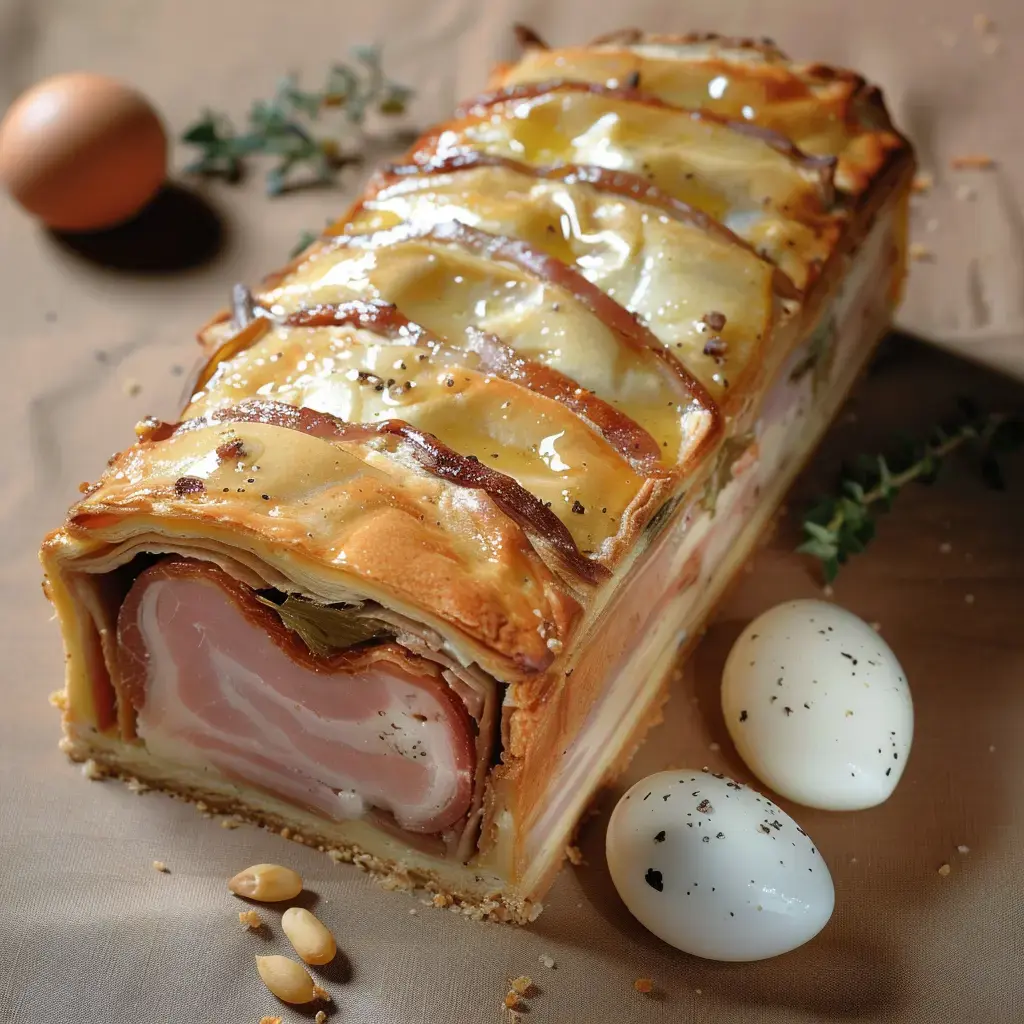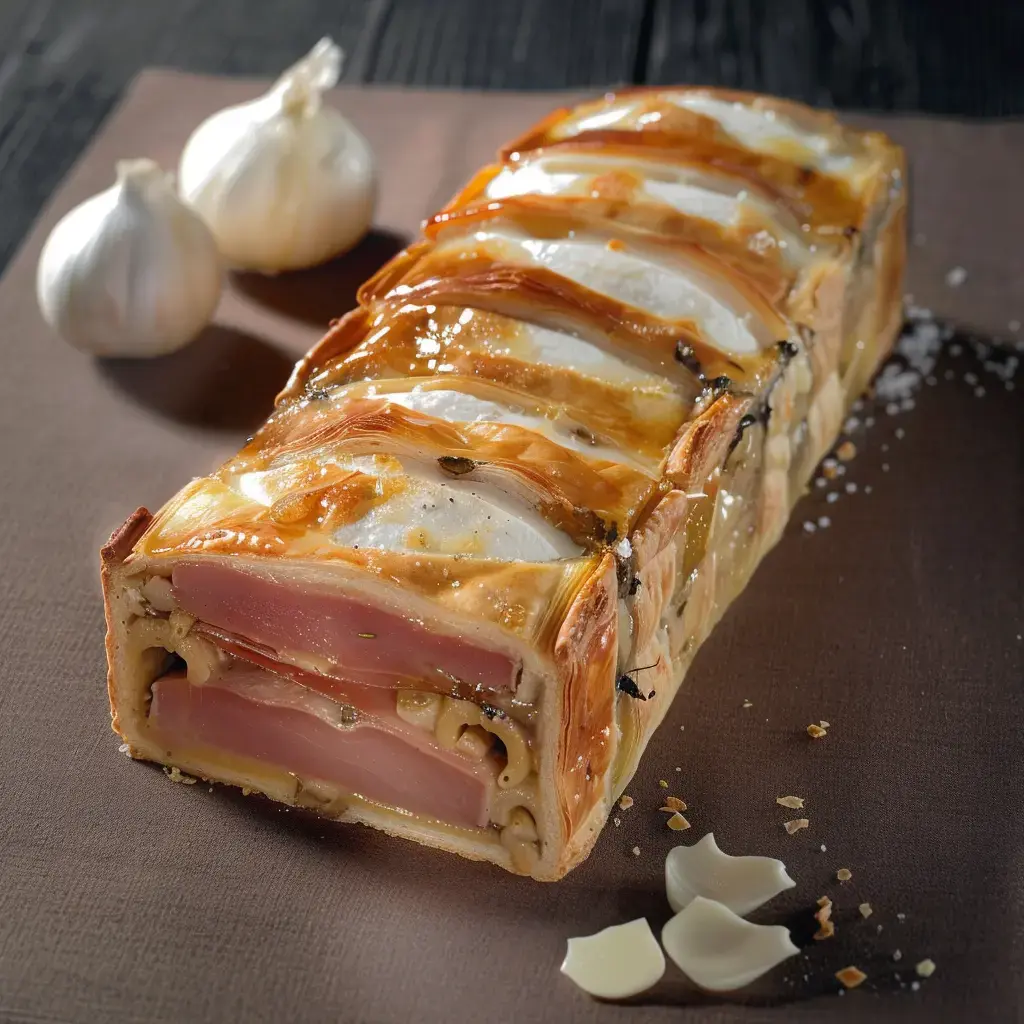 Pin it
Pin it
Family gatherings at my house wouldn't be the same without our beloved meat pastry. Everyone's eyes light up when I bring out this showstopper with its golden crust. I'm crazy about how that crispy exterior guards the flavorful meat mixture inside, with those silky foie gras bits and those tiny truffle pieces that work their magic. It's definitely one of those dishes that makes my guests smile from ear to ear.
The wonder of encased meat pastry
If you asked me to pick my restaurant's signature dish, I'd instantly point to our encased meat pastry. Customers can't get enough of that perfect contrast between the crunchy shell and the tender filling inside. What's my little edge? I always make it the night before when the kitchen's quiet and I've got all the time in the world to focus just on this special creation.
The trick up my sleeve
- For the filling: I grab 1 kg of marbled pork shoulder, 800 g of juicy pork neck, 250 g of fatty bacon for richness, 4 shallots and 4 garlic cloves sautéed in 50 g of butter, a glass of dry white wine, 200 g of raw foie gras and 2 eggs as binders.
- The extras: 500 g of prime veal, 2 thick slices of cooked ham, 300 to 400 g of semi-cooked foie gras and one truffle that infuses the whole pastry.
- My pork marinade: For each kilo: 12 g of fine salt, 2 g of pepper, 2 g of mixed spices, 3 g of pink salt, fresh thyme and bay leaf, 125 g of white wine, a splash of Madeira and Cognac.
- For the veal: Same seasoning base, but I add more white wine and Cognac.
- My homemade dough: 1 kg of type 55 flour, 500 g of quality butter, 20 g of salt, ice-cold water and one egg.
- The jelly: I melt 50 g of gelatin in a mix of water and Madeira.
My step-by-step approach
- I start by
- Getting all my ingredients ready. I cut my meats properly, mince the pork, slice the veal into strips and slowly melt my shallots and garlic in butter.
- The marinade
- I combine my meats with all the aromatics and let them sit in the fridge overnight so the flavors can really develop.
- The dough, a key moment
- Using a mixer, I blend my flour with butter, egg and cold water until I get a nice firm dough. Chilling it is absolutely necessary.
- The assembly, quite artistic
- I roll out my dough with care, layer my filling, ham and foie gras like a fancy sandwich. I seal it with dough, brush with egg and add some decorative touches.
- The baking
- My oven's heated to 170°C and I keep an eye on it for about 1 hour and 10 minutes. Then I let it cool down naturally.
- The finishing touch
- I pour my warm Madeira jelly through the holes and let it set in the fridge.
My chef's little tricks
In my kitchen, I never skimp on meat quality, that's what makes all the difference. I always take time to properly seal the edges of my dough, otherwise you'll end up with leaks everywhere! When I use a truffle, I gently tuck it between layers like a hidden gem. And my number one rule: I always let my pastry rest overnight in the fridge - that's how you get those flavors that just explode in your mouth.
 Pin it
Pin it
Frequently Asked Questions
- → How long does this meat pie last?
- It keeps for up to 5 days in the fridge if wrapped well. The jelly helps preserve it. Avoid freezing to prevent texture changes.
- → What's the purpose of marinating the meat?
- Marinating softens the meat and boosts its flavors. It's a key step, needing at least 24 hours for the best results.
- → Any tips for making perfect jelly?
- Pour the slightly warm jelly into the cooled pie through the vents. Let the pie cool completely first, and pour slowly to avoid air bubbles.
- → How do I check if it's fully cooked?
- Use a meat thermometer—65°C at the center means it's done. The crust should be golden, and the juices coming from the vents should be clear.
- → Can I make it ahead of time?
- Absolutely. Making it 2-3 days early allows the flavors to meld beautifully. Just store it in the fridge.
